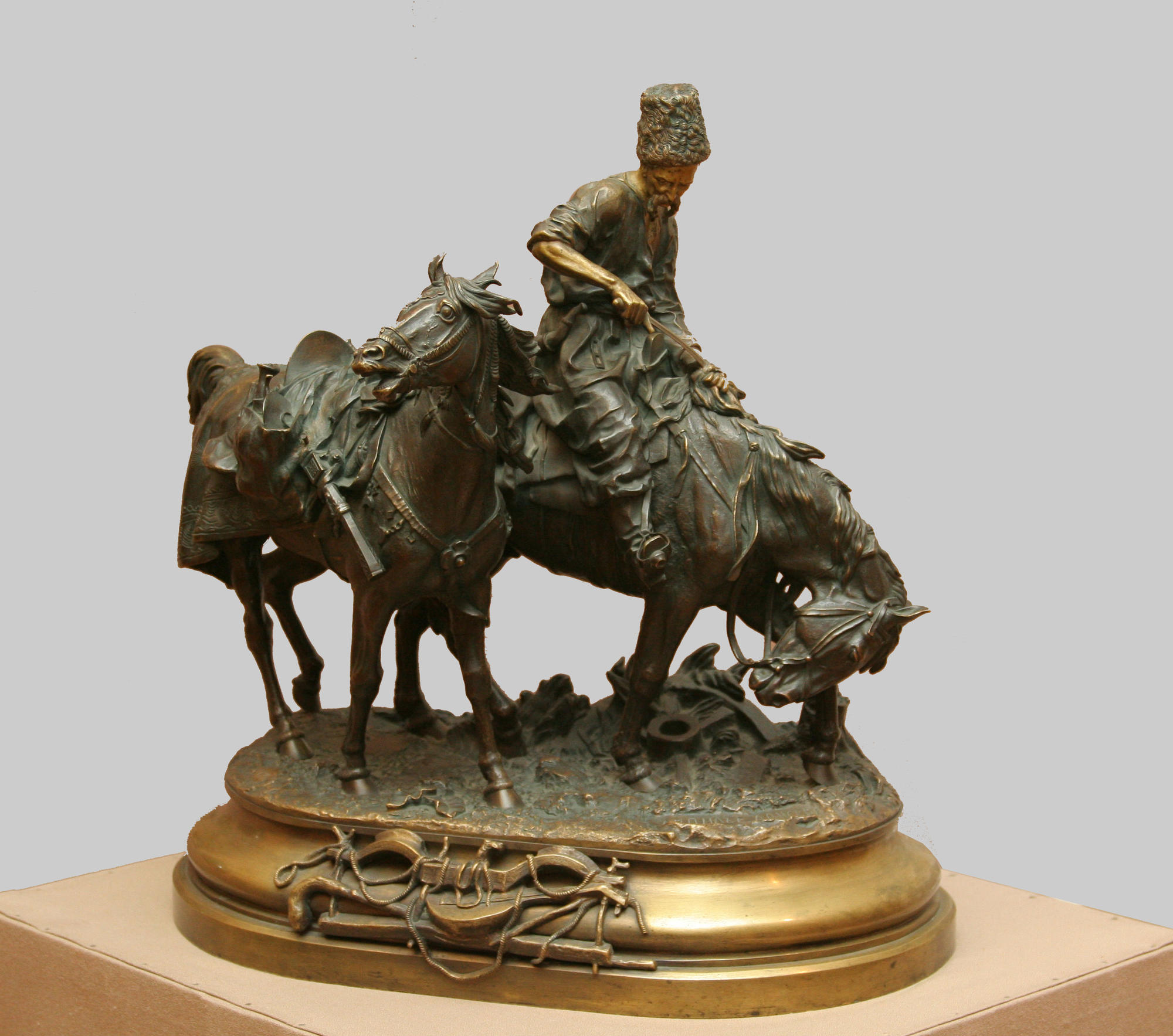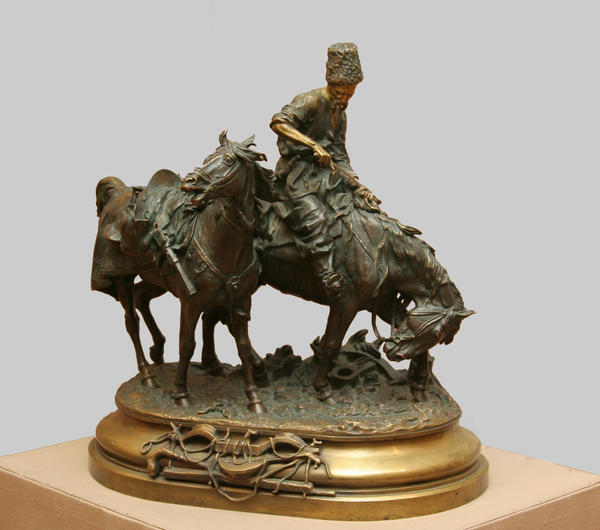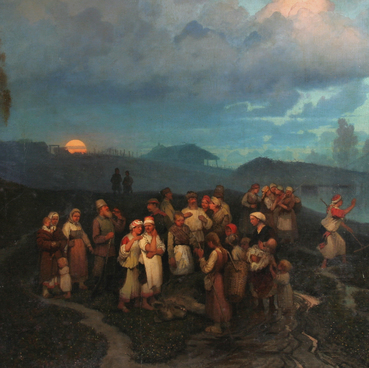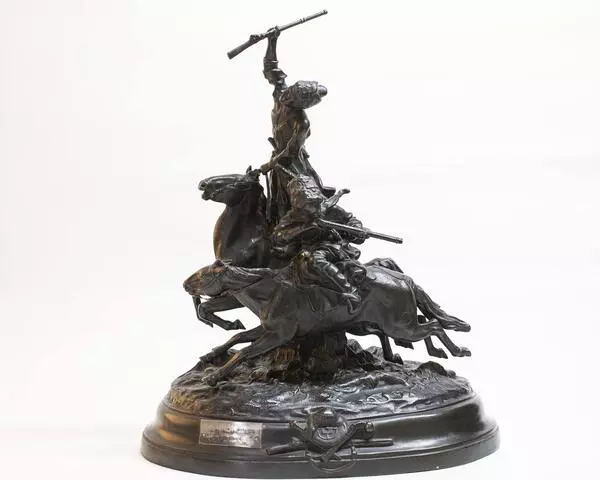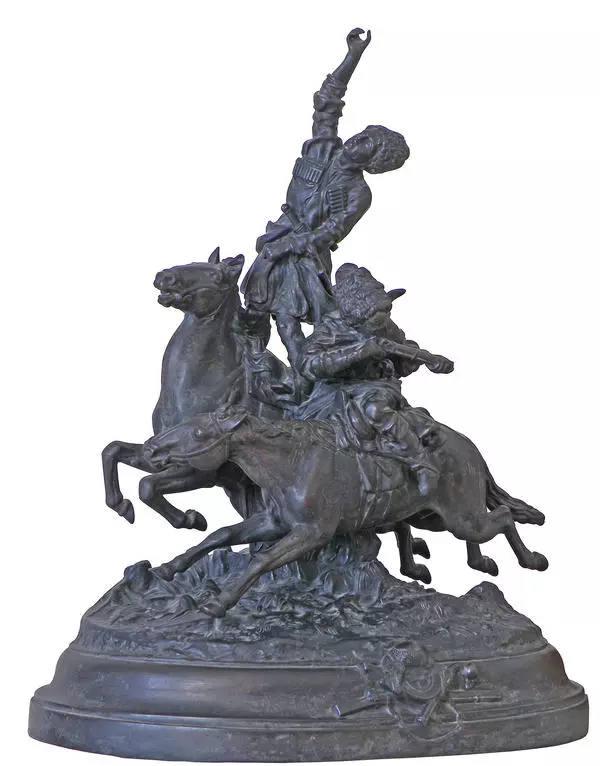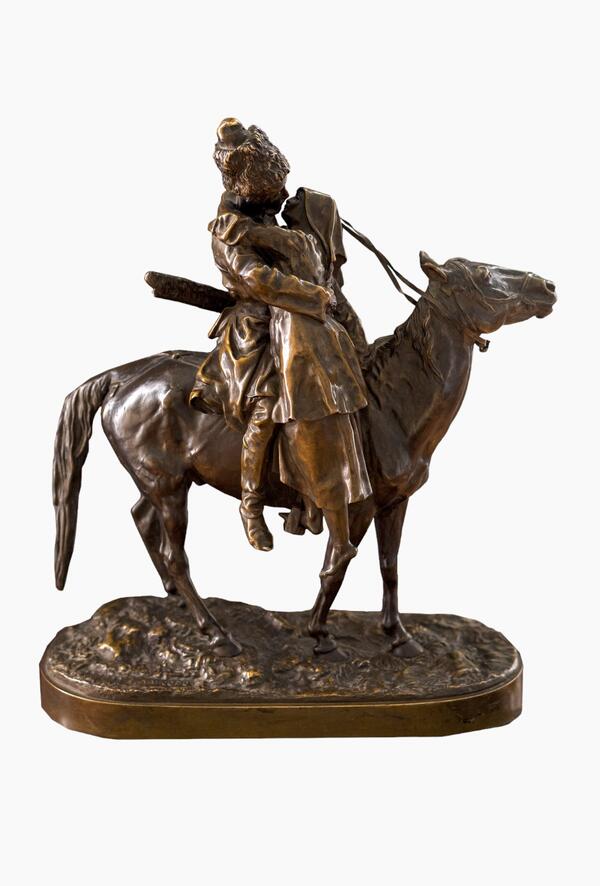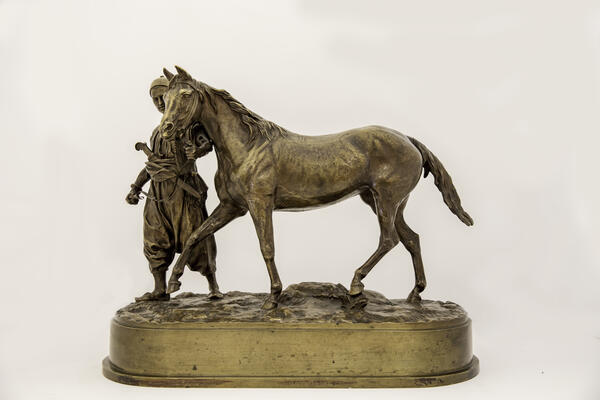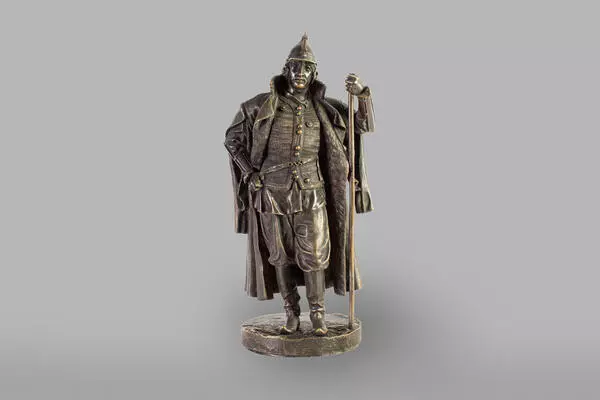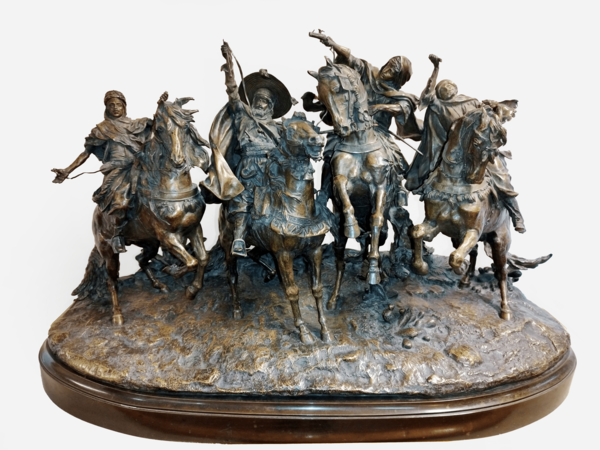Yevgeny Alexandrovich Lansere (1848-1886) was an outstanding Russian sculptor-animalist of the 19th century. He studied to be a lawyer in St. Petersburg. But he often attended the studio of sculptor N. I. Liberikh. He dreamed of the Academy of Arts and of his works presented at academic exhibitions. However, he did not receive support and recognition. He fulfilled orders from individuals.
Images of horses and double portraits of a horseman and a horse became the main themes in the Lansere’s work. He was a superb horse-rider and, according to artist Alexander Benoit, “knew the horse like no one else.” He sculpted the relief of muscles in detail, displayed the temper of the horse and even its soul. The master perfectly knew the human body too. Therefore, his sculptures turned out to be lively and meaningful, and his creativity was “deeply rooted in the folk tradition and truthful, ” as the artistic critic V. Stasov told about him.
The second half of the 19th century was the time, when everyday and national history themes began to develop in art. Lansere dedicated a whole series of works to the Russo-Turkish War of 1877-1878. This theme and his passion for horses became the cornerstone of the famous sculpture Zaporozhian Cossack after Battle. It was cast in bronze in the factories of N. Stange and F. Chopin. This work was listed in the author”s catalogues under different names. There were such names as Zaporozhian Cossack after a Fight, Cossack with a Prey.
One can find a description of the plot: “After the battle an elderly Zaporozhian Cossack on a horse is cleaning his sabre, while leading a Turkish horse without a rider.” This is a narrative about the outcome of a recent fight. The rider is a stern Zaporozhian Cossack with a magnificent hanging mustache. He’s wearing a high fur hat - papakha - and he’s got a bloody sabre in his hands. He is riding a tired horse, apparently wounded in the battle. The horse is moving, though slowly, yet confidently, with long strides. The Cossack is leading nearby a captured Turkish horse without the rider. It is helpless and confused.
Zaporozhian Cossack after a Battle is one of the most dramatic and emotional creations of Yevgeny Lansere. Expressiveness and accuracy of the composition solution precisely convey the mood of each member of the group. The Cossack is sitting in the saddle in a relaxed pose and wipes the sabre with the mane of his horse with a habitual gesture. The hand is sharply bent, but there is no tension or aggression in this gesture. The horse has bowed its head to the stretched forward leg and is rubbing it with its nose. The leg is hurt or injured. Anxiety of the trophy horse stands out clearly against this background. It has lost its master and is still looking for him, half-turning back. Its mane is fluttering. It’s captive, but not broken yet.
The sculpture is interesting not only from the narrative and emotional points of view, but also from the point of view of historical authenticity. The sculptor was well versed in equipment. For many years he collected saddles, weapons, pieces of camping equipment. In this composition he recreated a military episode in great detail. High papakha and simple Cossack clothes complete his ascetic image. He is armed with a gun and a lance. They are fastened vertically, but pointed at different directions. Turkish weapons and everyday items are attached to the saddle of the trophy horse.
Images of horses and double portraits of a horseman and a horse became the main themes in the Lansere’s work. He was a superb horse-rider and, according to artist Alexander Benoit, “knew the horse like no one else.” He sculpted the relief of muscles in detail, displayed the temper of the horse and even its soul. The master perfectly knew the human body too. Therefore, his sculptures turned out to be lively and meaningful, and his creativity was “deeply rooted in the folk tradition and truthful, ” as the artistic critic V. Stasov told about him.
The second half of the 19th century was the time, when everyday and national history themes began to develop in art. Lansere dedicated a whole series of works to the Russo-Turkish War of 1877-1878. This theme and his passion for horses became the cornerstone of the famous sculpture Zaporozhian Cossack after Battle. It was cast in bronze in the factories of N. Stange and F. Chopin. This work was listed in the author”s catalogues under different names. There were such names as Zaporozhian Cossack after a Fight, Cossack with a Prey.
One can find a description of the plot: “After the battle an elderly Zaporozhian Cossack on a horse is cleaning his sabre, while leading a Turkish horse without a rider.” This is a narrative about the outcome of a recent fight. The rider is a stern Zaporozhian Cossack with a magnificent hanging mustache. He’s wearing a high fur hat - papakha - and he’s got a bloody sabre in his hands. He is riding a tired horse, apparently wounded in the battle. The horse is moving, though slowly, yet confidently, with long strides. The Cossack is leading nearby a captured Turkish horse without the rider. It is helpless and confused.
Zaporozhian Cossack after a Battle is one of the most dramatic and emotional creations of Yevgeny Lansere. Expressiveness and accuracy of the composition solution precisely convey the mood of each member of the group. The Cossack is sitting in the saddle in a relaxed pose and wipes the sabre with the mane of his horse with a habitual gesture. The hand is sharply bent, but there is no tension or aggression in this gesture. The horse has bowed its head to the stretched forward leg and is rubbing it with its nose. The leg is hurt or injured. Anxiety of the trophy horse stands out clearly against this background. It has lost its master and is still looking for him, half-turning back. Its mane is fluttering. It’s captive, but not broken yet.
The sculpture is interesting not only from the narrative and emotional points of view, but also from the point of view of historical authenticity. The sculptor was well versed in equipment. For many years he collected saddles, weapons, pieces of camping equipment. In this composition he recreated a military episode in great detail. High papakha and simple Cossack clothes complete his ascetic image. He is armed with a gun and a lance. They are fastened vertically, but pointed at different directions. Turkish weapons and everyday items are attached to the saddle of the trophy horse.
